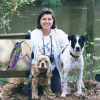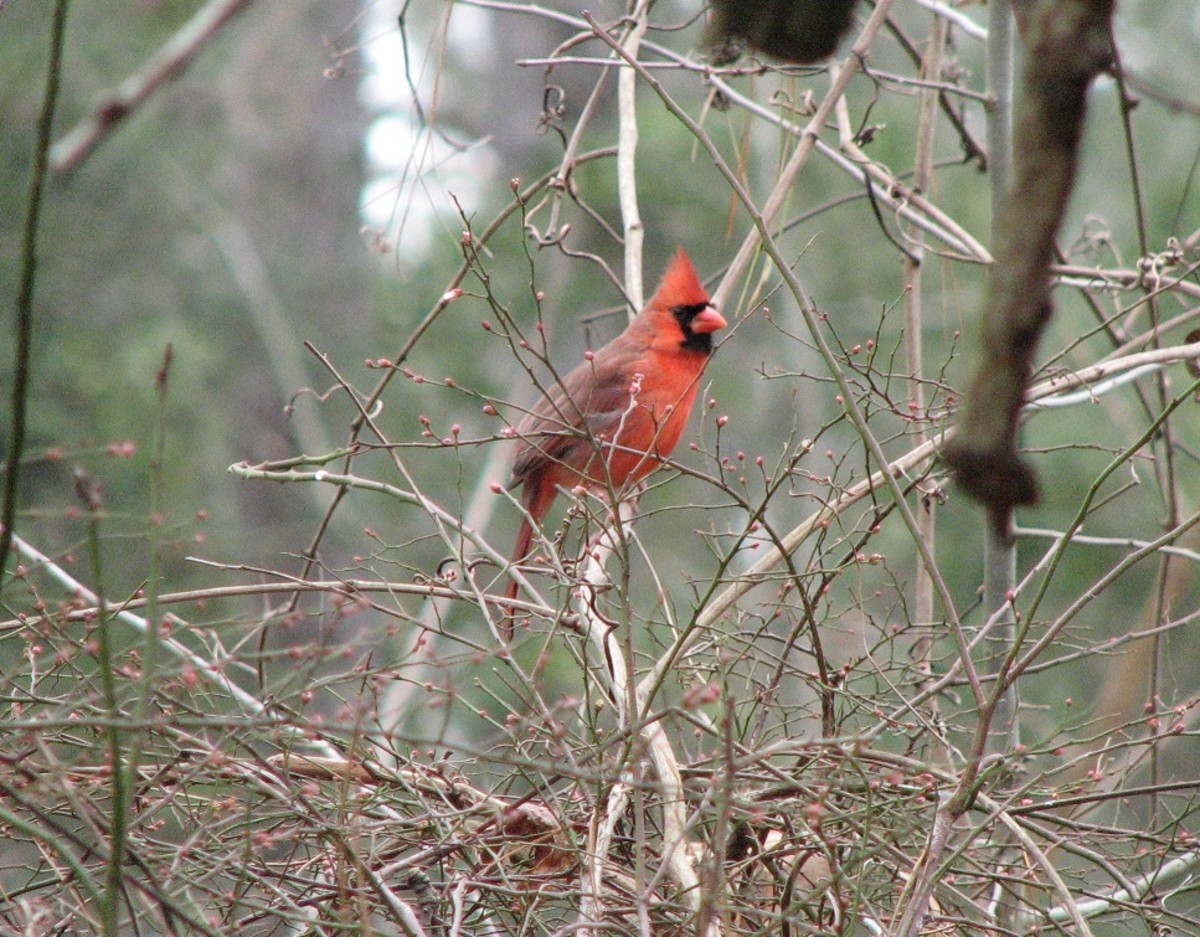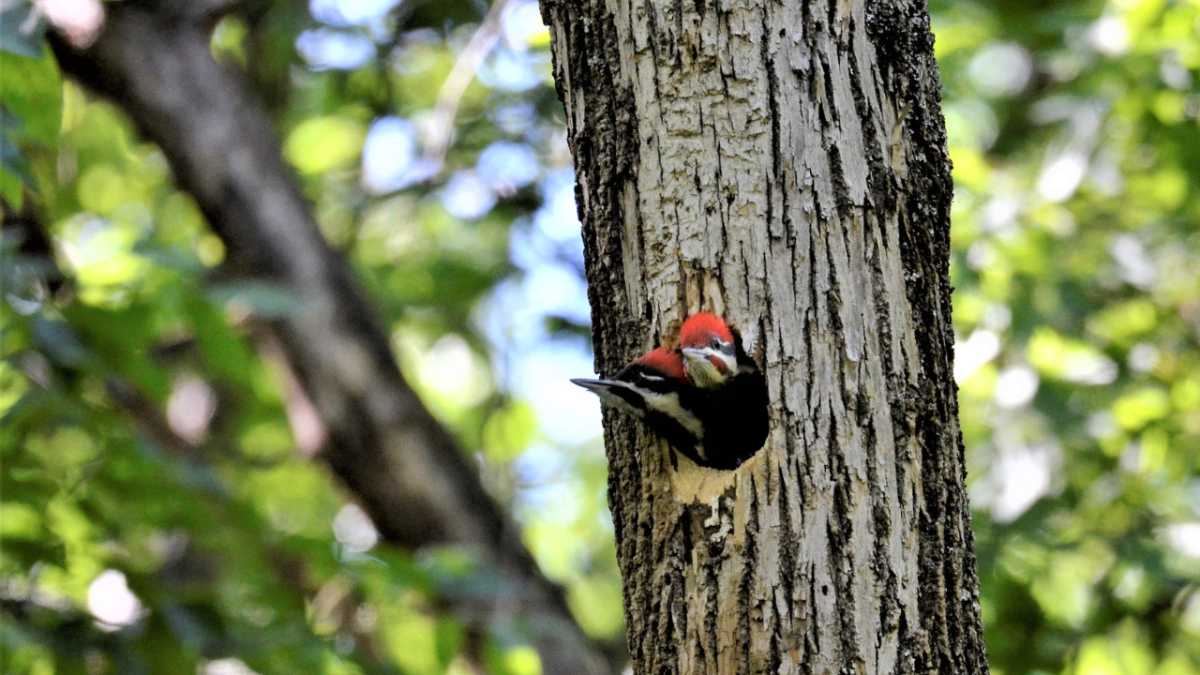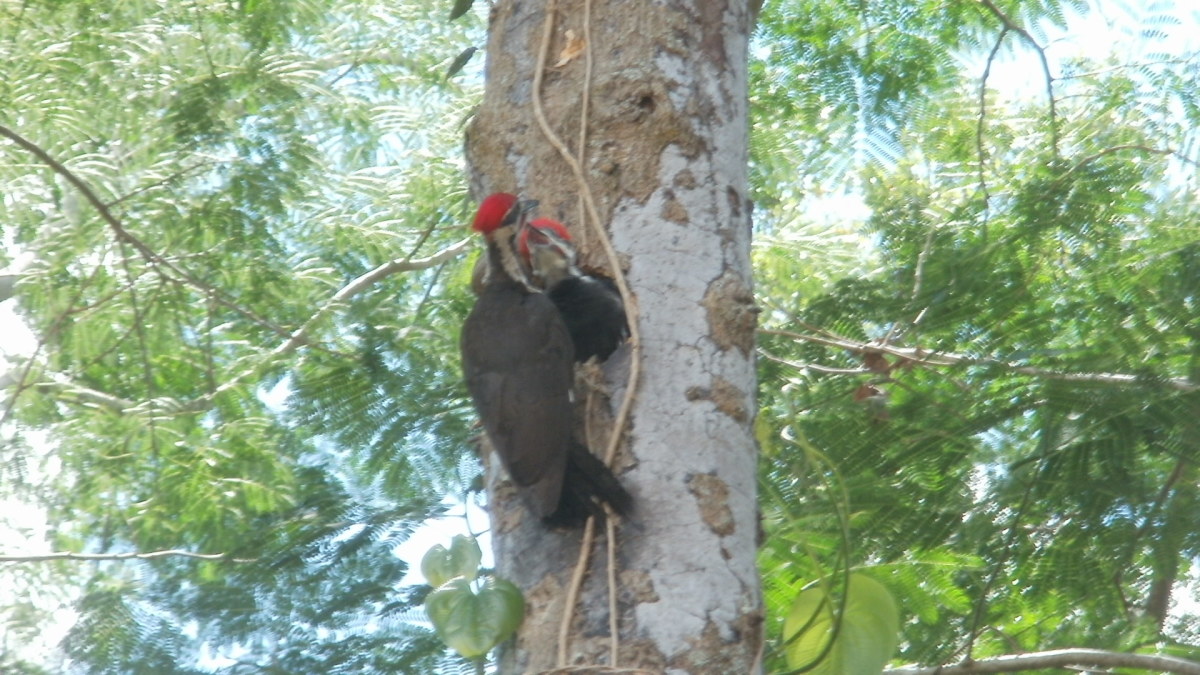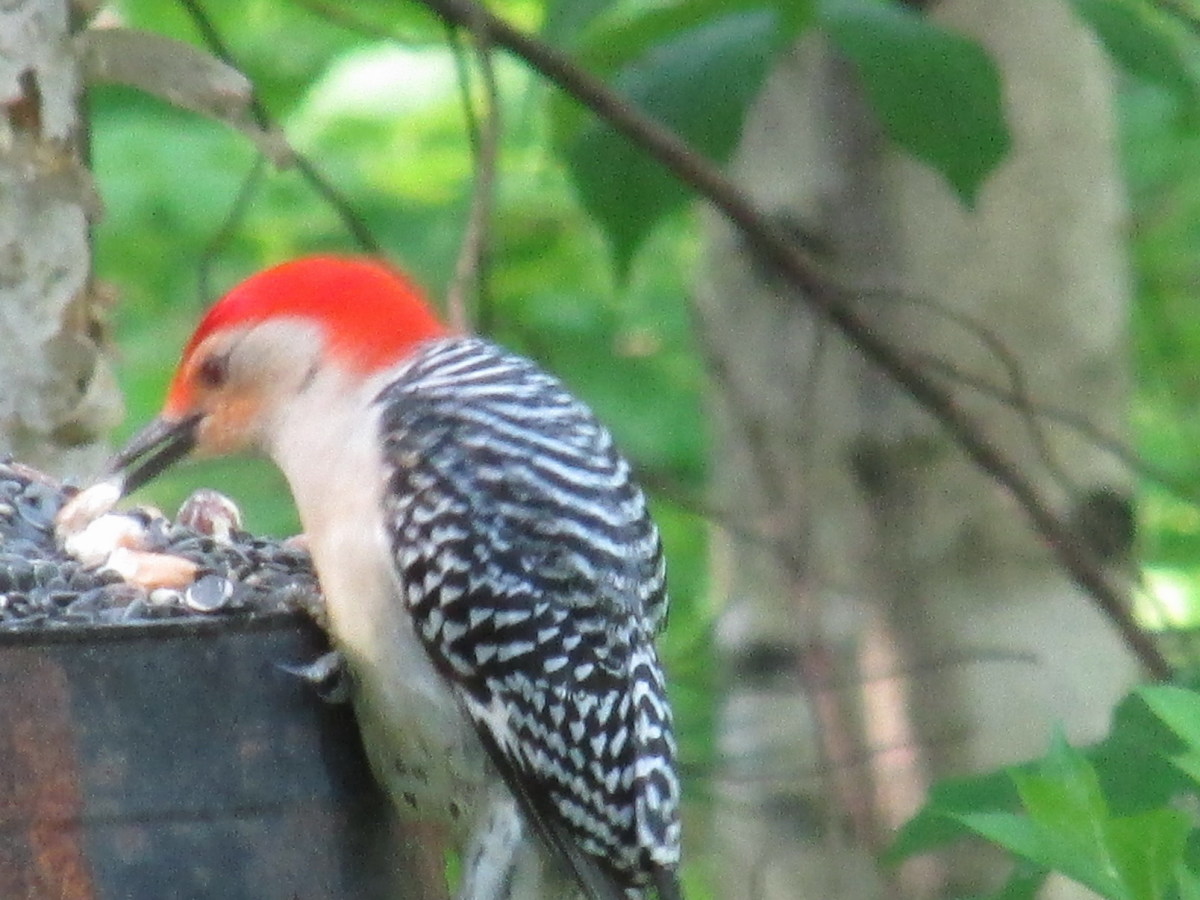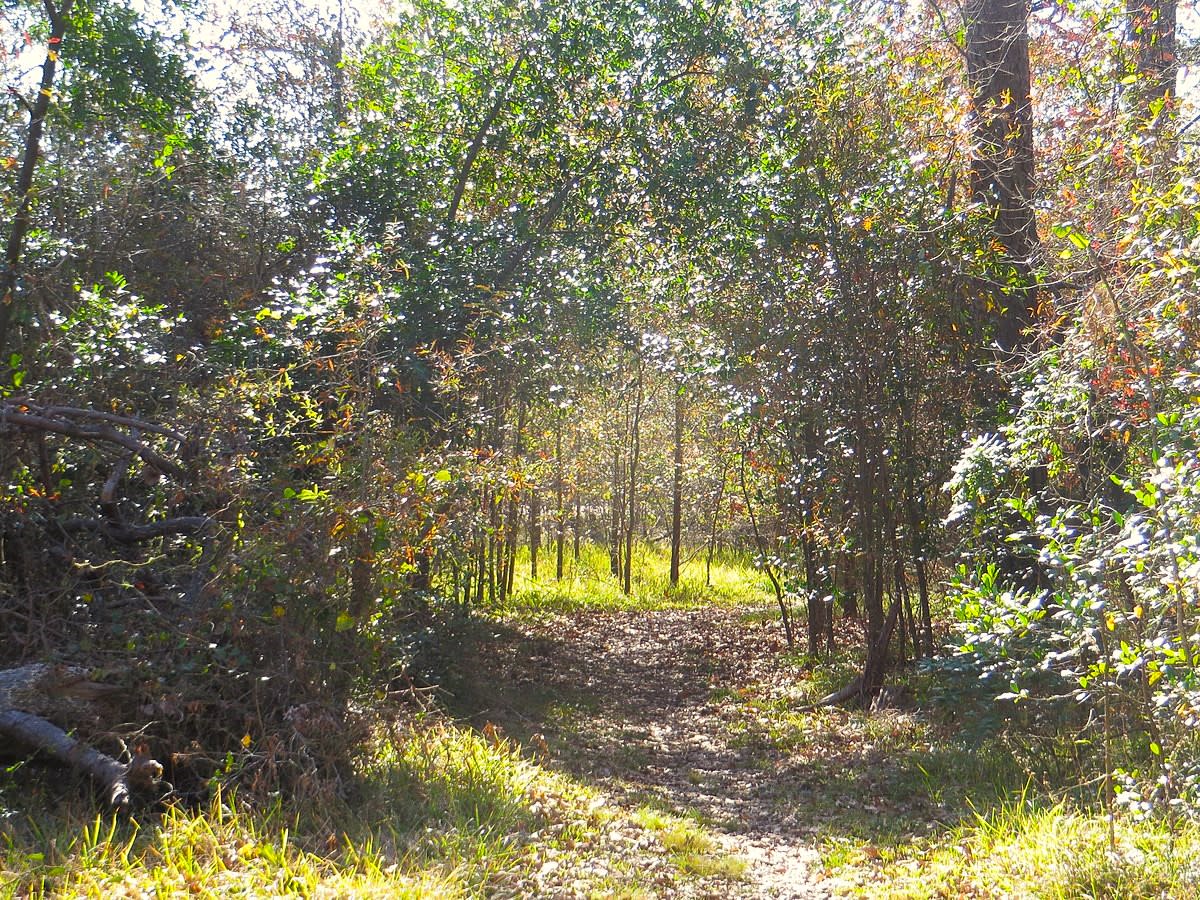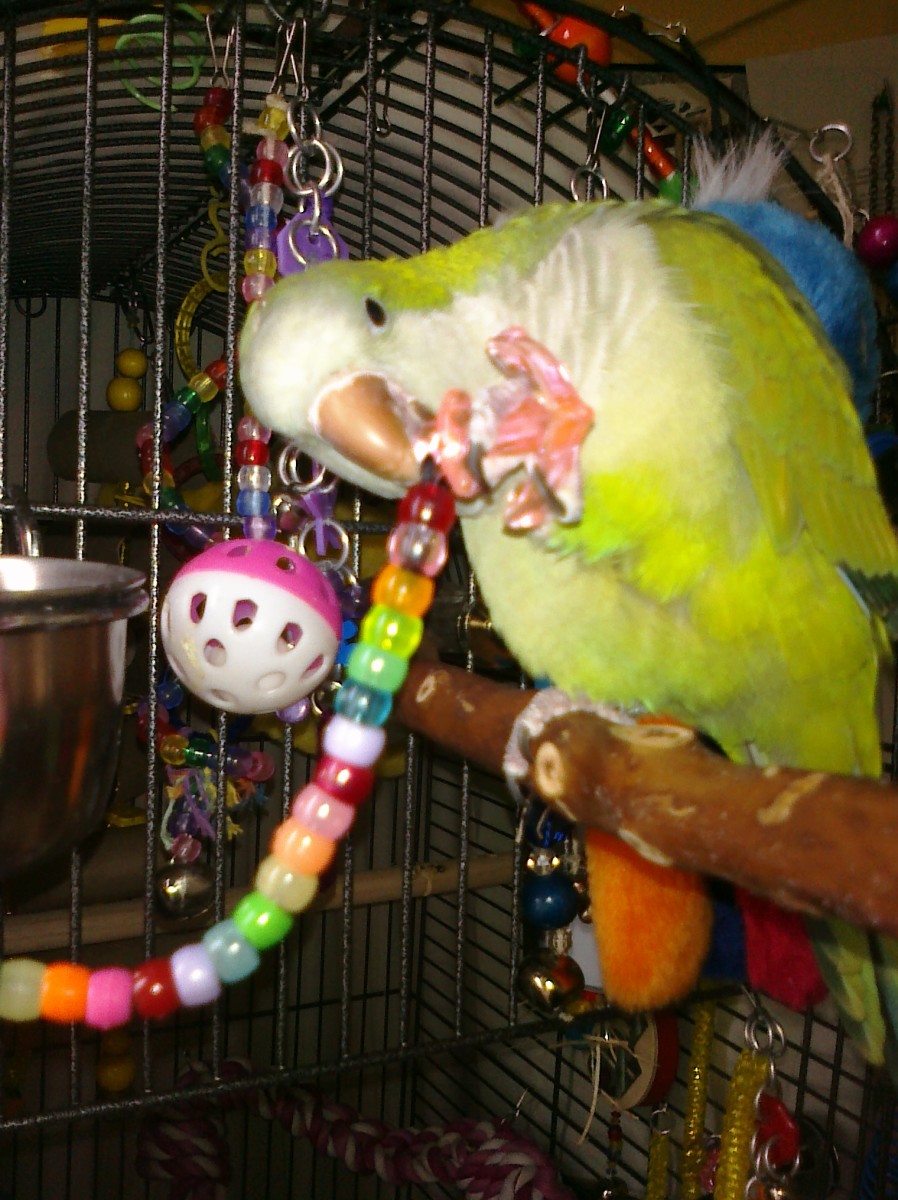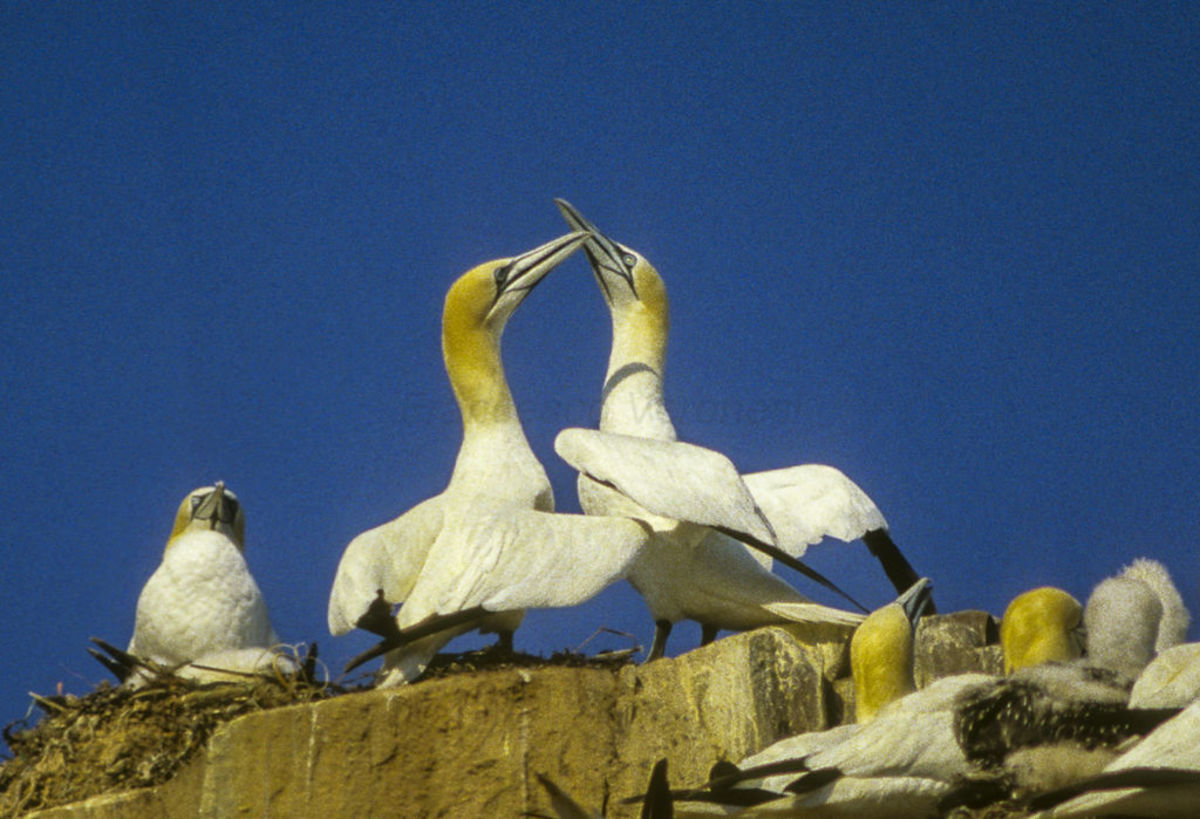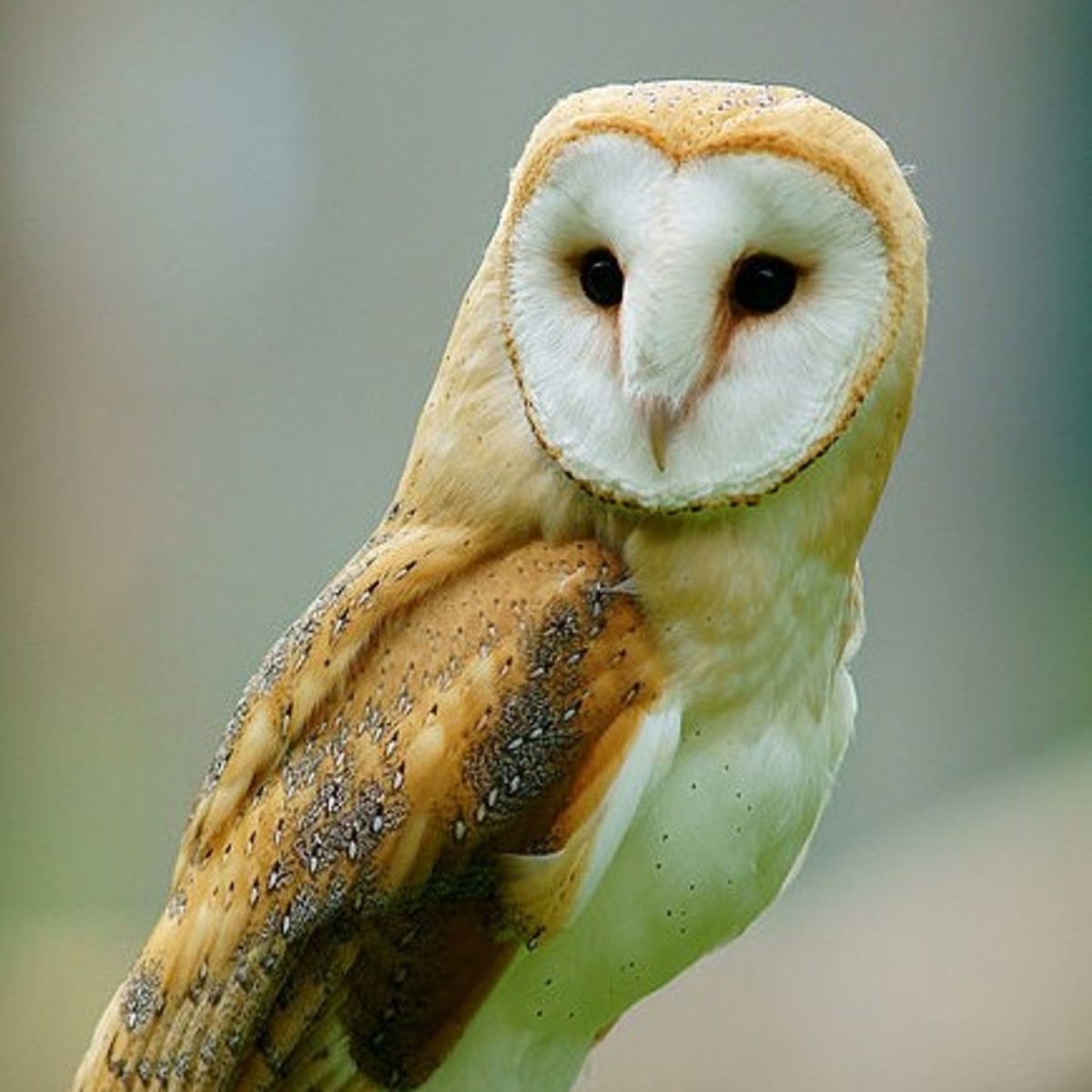Red-bellied Woodpecker Family
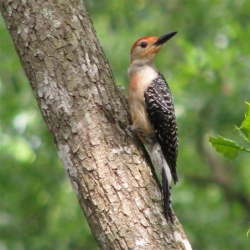
Birds and Their Young Use What Katrina Left
The only good thing that Hurricane Katrina did for Southeastern Louisiana was to leave plenty of broken trees in which the woodpeckers and other cavity nesting birds could raise their young. The Red-bellied Woodpeckers have been very prolific since Hurricane Katrina and we have photographed much of the day to day comings and goings of a family that nested in a broken Pine tree near our house. We hope you enjoy this photo journal of the life and habits of a pair of Red-bellied Woodpeckers and their babies.
Many of the photos seen here can be purchased in Naturegirl7's Zazzle Shop as print-on-demand products such as posters, cards, apparel, mugs, etc.
Our Woodpecker Family
The woodpecker family contains many beautiful birds of varying sizes. One of the most common woodpeckers in our neck of the woods is the medium sized Red-bellied Woodpecker. These colorful birds are permanent residents so we enjoy seeing them all year long. We are lucky to have several breeding pairs in our habitat. Some of them have become quite used to us and have brought their young to the feeding station nearby, allowing us to get some good photos of the whole family and giving us some insight into the habits and family life of the wonderful and intelligent birds.
Female Red-bellied Poster
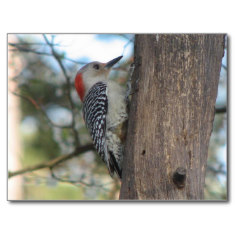
Male Red-bellied Poster
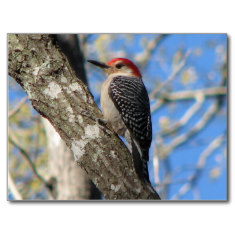
Red-bellied Identification
All About Birds
Red-bellied Woodpeckers range includes most of the Eastern half of the United States. It is described as being a medium to large-sized woodpecker with a red hood from top of head to back of neck. The back barred black and white. It is about 9 inches long with a wingspan of 13-17 inches and weighs from 1.98-3.21 ounces.
Listen to the Sounds of the Red-bellied Woodpecker from the PWRC USGS.
Differences Between the Sexes
The male has a red hood extending to the forehead. The female has a red nape only. The male Red-bellied Woodpecker has a longer bill and a longer, wider tongue tip than the female. These adaptations may allow the male to reach deeper into furrows to extract prey and may allow the sexes to divide up the resources in one area.
Male Storing Sunflower Seeds
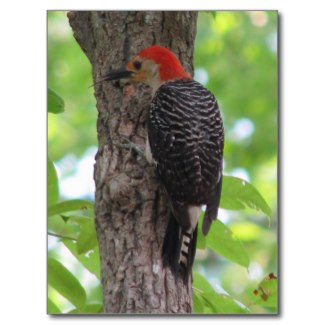
Habitat and Diet
The Red-bellied Woodpecker inhabits forests, groves, orchards, farmland and suburbs. According to Sibley, "Woodpeckers tend to be habitat specialists; as such, they are to some extent at risk of extinction when their habitat is threatened." Breeding Bird Survey data reports show that while other woodpecker numbers have dropped, Red-bellied Woodpecker numbers are increasing. We have certainly seen an increase in numbers of all of the six species of woodpeckers that inhabit our habitat in Southeastern Louisiana, mainly because of the extraordinarily large numbers of dead and decaying pine trees that were left after Hurricane Katrina tore a path of destruction through our area. There were so many trees down that we couldn't move them all without destroying what was left of the under story. So today a wide variety of birds and animals take advantage of the "Katrina log" feeders that we made from the debris.
Male Woodpecker at Feeder
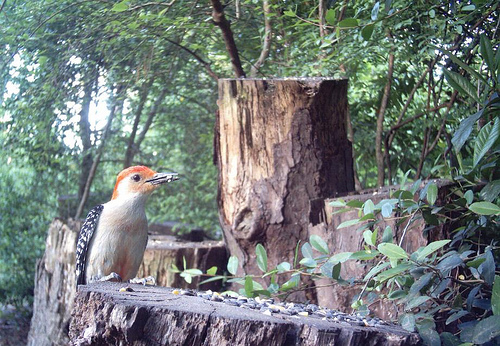
Red-bellied eating Blackberry Poster
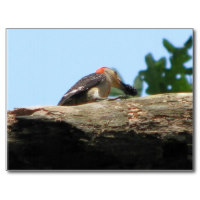
Food
Red-bellieds eat a variety of insects, invertebrates, fruit and seeds. Animal food includes: beetles (including wood-boring larvae), ants and other Hymenoptera, grasshoppers, crickets, caterpillars and bugs. There are also records of these woodpeckers feeding upon vertebrates such as small tree frogs and lizards. Plant food includes: Oak, Grape, Corn, Mulberry, Virginia-creeper, Cherry, Pine, Poison-ivy, Bayberry, Hickory, Dogwood, Beech, Hazelnut, Black Gum, Elderberry and Palmetto. (Martin, Zim and Nelson, American Wildlife & Plants A Guide to Wildlife Food Habits.)
Young Begging to Dad
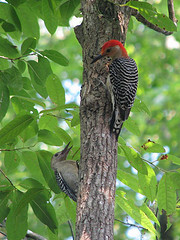
Many woodpeckers stash or store food in the cracks and crevices in trees and Red-bellied woodpeckers are one that does, but this species does not appear to defend these stashes against mammals or other birds. They also use holes in trees to anchor a tough seed or nut so that it can be broken open. We were able to capture a male Red-bellied "teaching" one of his young ones just how to do this.
Teaching Young to Find Food
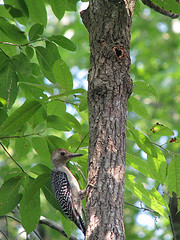
Woodpecker in the Backyard
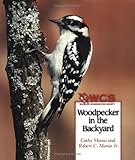
Red-bellied Eating Mulberries Vid
Breeding
At the Nest Hole
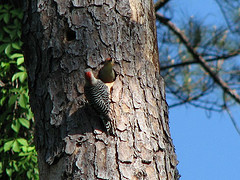
Male and Female on Nest Tree
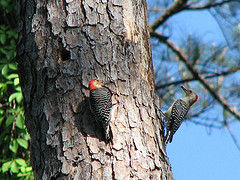
Breeding
Like most woodpeckers, Red-bellied woodpeckers are monogamous and territorial. Woodpeckers are cavity nesters who drill out a new nesting cavity each year. Red-bellieds will also nest in birdhouses, but don't do so often. We have seen them roost in a Bluebird size nest box that they enlarged the hole in. They often have a cavity for breeding in the spring and another one that they drill out in the fall for roosting. It usually takes about 2 weeks to excavate the cavity.
The hole of the nest cavity usually faces north here in the hot, humid south so that the nest will not become overheated by the afternoon sun. The nesting cavity consists of a narrow (just wide enough for the woodpecker) horizontal entrance to a larger vertical cavity where the 2-6 (usually 4) white eggs are laid on a bed of wood chips.
Both the male and female incubate the eggs for 12 days. The chicks are altrical (blind and naked at birth) and fledge from 24-27 days. Both parents care for the young.
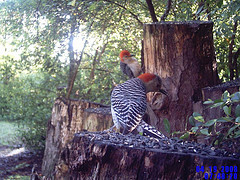
As the chicks grow, the parents frantically go back and forth to the feeders and the woods to bring food to stuff into the gaping mouths.
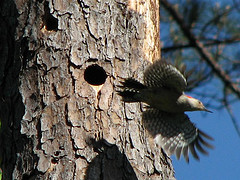
Colorful Male Poster
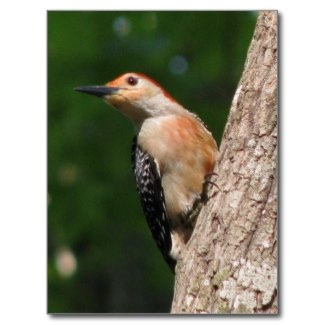
Changing of the Guard Vid
Fledging
Fledgling
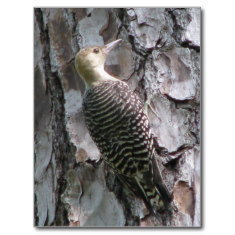
The Chicks Fledge
Woodpecker parents will often divide the fledglings between them when foraging and we have observed this on several occasions. Many times the fledglings will stay with the parents until fall, even though they may not be dependent on them.
Fledgling and Male
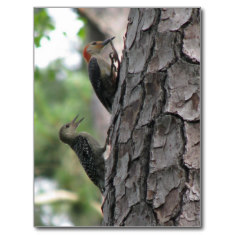
Woodpeckers of North America

Learning to Feed Themselves
Peck Under the Bark for Bugs
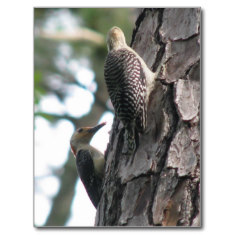
This is What You'll Find, Yum!
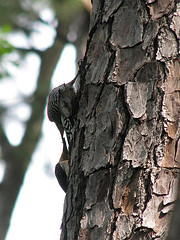
As fledglings mature, the parents teach them how to find their own food and how to store food. The father patiently models the behavior at the log feeder and the storage cavity that will help the young ones survive. Dad begins to look tired, but finally, one by one, the babies finds food for itself.
Each skill taught by the parents helps to ensure the chick's survival. Knowing how to find and store food will help the young ones make it through the winter.
This is How It's Done, Little One.
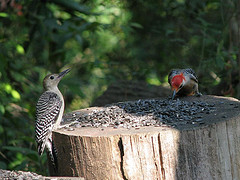
After sitting on the side of the log feeder, begging woefully while Dad ignored it, this baby finally picked up a shelled sunflower seed and ate it.
Predators and Usurpers of Nests
Flying Squirrel Postcard
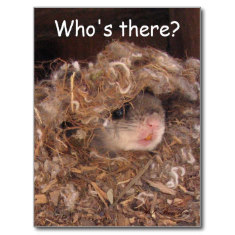
Predators and Usurpers
The predators of the adult birds include many birds of prey like Sharp-shinned and Cooper's hawks, Rat Snakes and house Cats. Imported European Starlings often try to take over nesting cavities. In some areas, half of all Red-bellied Woodpecker nesting cavities are taken over by starlings. Other predators of the nestlings and eggs include rat snakes, red-headed woodpeckers and pileated woodpeckers. Old woodpecker cavities (and sometimes the new ones) are used by a variety of creatures including flying squirrels and bluebirds.
Owl and the Woodpecker

Texas Rat Snake Climbing Tree
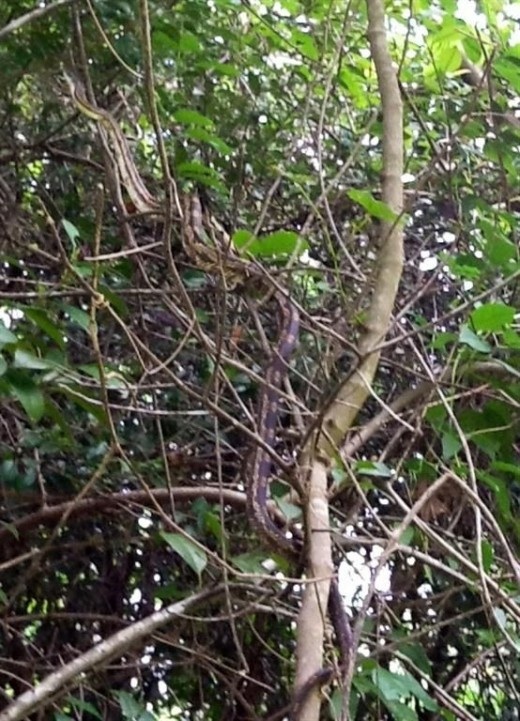
Woodpecker parents will aggressively defend their nests and young. They harass a predator such as the Texas rat snake pictured above, with alarm calls and may even attack predators that come near the nest. If a snake does get into the nesting cavity it will eat the eggs and/or baby birds.
Imported European starlings pose another problem because they will take over the nesting site and throw out the eggs.
Links to More About Birds
- The Cardinal's Nest
Northern Cardinal birds inhabit most of North America. Here you will find many photos of and information about the habits of this striking red bird. - The Wings of Winter
The birds of winter in Louisiana add color and movement to the dreary garden. Photographs of Cardinals, Chickadees, Bluebirds and Woodpeckers plus gift suggestions for birders can be found here.
Red-bellied Woodpecker Tote Bag
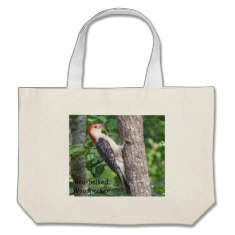
Red-bellied on Zazzle
If you enjoyed the photos on this page, then you may want to take a look at Naturegirl7's Zazzle Shop. Products such as this tote bag sport my red-bellied designs and photos.
Red-bellied Woodpecker Speaks Vid
© 2008 Yvonne L B
